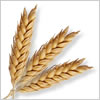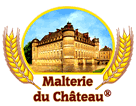Votre panier
Nouvelles de la société
- Fermentis et la Malterie du Château: Invitation à la Fermentis Academy le 15 decembre 2023
- Rejoignez La Malterie du Château® à BrauBeviale 2023 - la première exposition mondiale de brassage !
- Lettre ouverte pour les clients et les partenaires de la part de Jean-Louis Dourcy, Directeur Général de la Malterie du Château

 EU: EU introduces new maximum limits for T-2, HT-2 and DON mycotoxins in cereals and cereal products destined for food
EU: EU introduces new maximum limits for T-2, HT-2 and DON mycotoxins in cereals and cereal products destined for food
As of 1 July 2024, the EU introduced new maximum limits for T-2, HT-2 and DON (deoxynivalenol) mycotoxins in cereals and cereal products destined for food which will impact exports both to EU member states and Northern Ireland, NFU reported on August 2.
Mycotoxins are produced by certain fungi and levels found in unprocessed and processed food products are closely monitored.
The EU has recently updated Regulation (EU) 2023/915 that sets limits on the levels of certain mycotoxins found in products produced in, or exported into, the EU.
The maximum level for DON (deoxynivalenol) has been lowered from 1250 ppb to 1000 ppb for unprocessed cereal grains (excluding oats).
The maximum level in unprocessed oat grains with husk remains at 1750 ppb.
A maximum level of 600 ppb has been set for DON in milling products of cereals.
Maximum levels (sum) of T-2 and HT-2 toxins have been set as follows, reflecting previous EU guidance levels.
• Unprocessed cereal grains (excluding barley) – 50 ppb.
• Unprocessed barley grains (excluding malting barley) – 150 ppb.
• Unprocessed malting barley grains – 200 ppb.
• Unprocessed oat grains with husk – 1250 ppb.
• Oats placed on market for final consumer – 100 ppb.
• Milling products of oats – 100 ppb.
These maximum levels will apply to cereals and cereal products destined for the EU food market, as well as exports to Northern Ireland, who will also be operating under these limits.
DON, T-2 and HT-2 mycotoxins are produced by some types of fusarium fungi, which can also produce mycotoxins such as ZON (zearalenone) and fumonisins.
DON is most commonly produced by Fusarium graminearum and Fusarium culmorum, with rain at flowering and harvest being the biggest risk factors.
With the wet weather seen this year, there is a greater risk of mycotoxin production.
T-2 and HT-2 mycotoxins are of greater concern in oats, predominantly produced by fusarium langsethiae.
Revenir
E-malt.com, the global information source for the brewing and malting industry professionals. The bi-weekly E-malt.com Newsletters feature latest industry news, statistics in graphs and tables, world barley and malt prices, and other relevant information. Click here to get full access to E-malt.com. If you are a Castle Malting client, you can get free access to E-malt.com website and publications. Contact us for more information at marketing@castlemalting.com .





